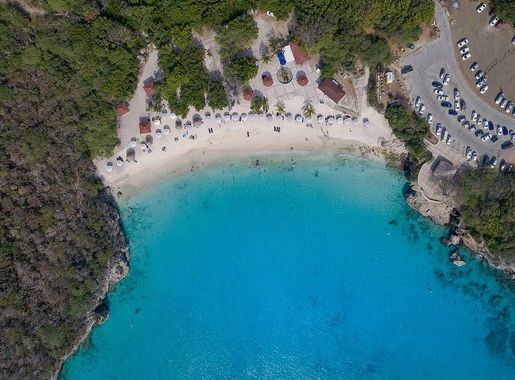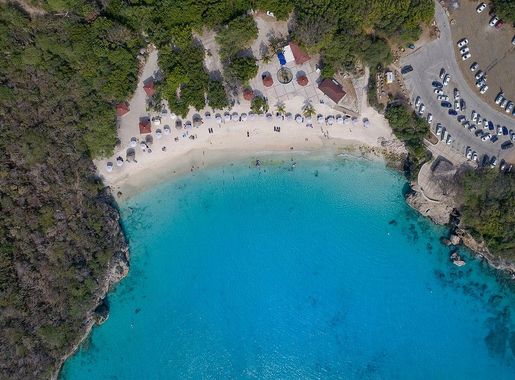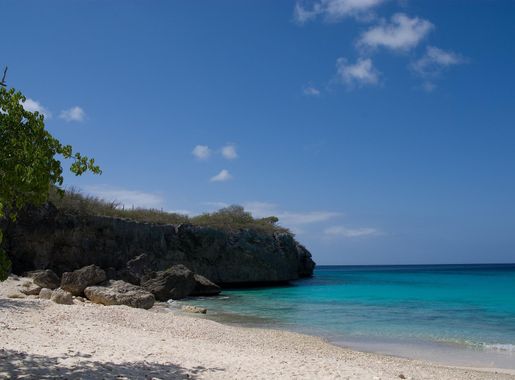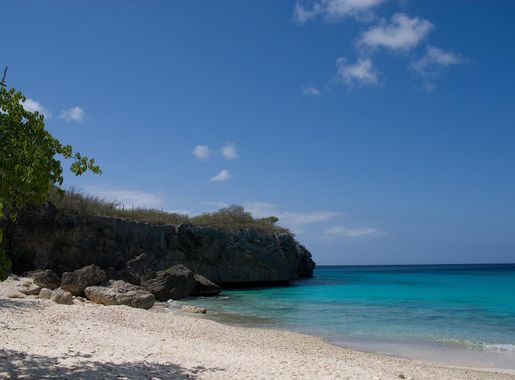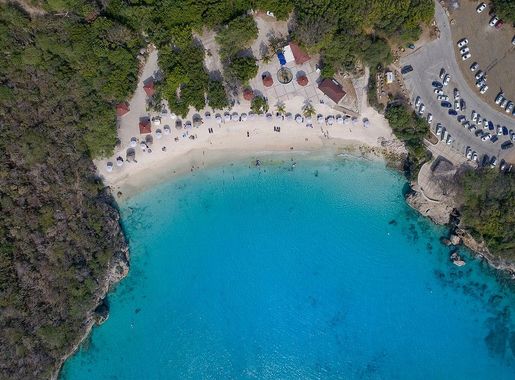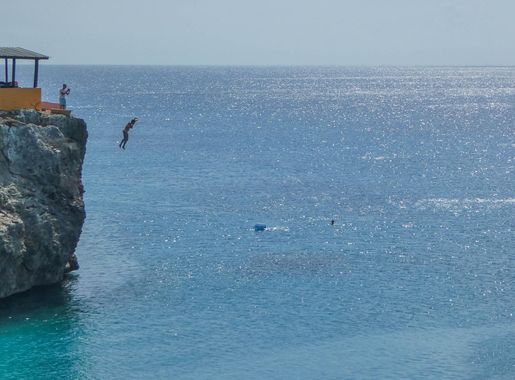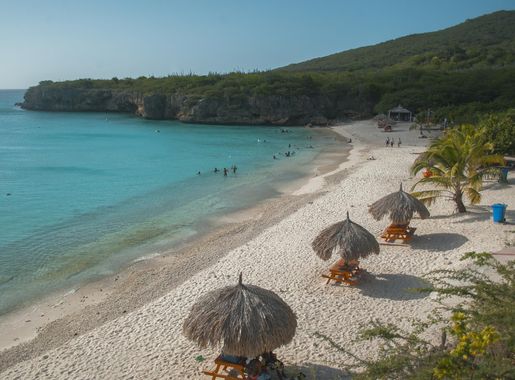
Paradise Found: Playa Kenepa in Curacao
Discover Playa Kenepa in Curacao: A Caribbean gem with turquoise waters, white sands, and stunning cliffs, perfect for swimming, snorkeling, and relaxation.
Playa Kenepa, also known as Kenepa Beach, is one of the most beautiful beaches in Curacao. Located on the island's northwest coast, it is famous for its crystal-clear turquoise waters and powdery white sand. The beach is actually divided into two parts: Grote Knip and Kleine Knip. Both offer stunning views and a perfect setting for relaxation and water activities. Grote Knip is the larger of the two and is popular for swimming, snorkeling, and sunbathing. The shallow waters near the shore make it an ideal spot for families with children. The beach is surrounded by cliffs, offering excellent vantage points for photography and enjoying the panoramic views of the Caribbean Sea. Kleine Knip, on the other hand, is smaller and more secluded. It is perfect for those who seek a quieter and more intimate experience. The calm waters are ideal for snorkeling, where you can explore the vibrant marine life just a few meters from the shore. This beach is less crowded, making it a great spot for a peaceful day out. Both beaches are equipped with basic amenities like restrooms and snack bars. However, it is recommended to bring your own food and drinks if you plan to spend the whole day, as options can be limited. The best time to visit Playa Kenepa is during the weekdays when it is less crowded, giving you more space to enjoy its natural beauty.
Local tips in Playa Kenepa
- Arrive early to secure a good spot, especially on weekends.
- Bring your own snorkeling gear to fully enjoy the underwater scenery.
- Pack a picnic as food options are limited.
- Visit during weekdays for a less crowded experience.
- Don't forget your camera for breathtaking panoramic shots.
Paradise Found: Playa Kenepa in Curacao
Playa Kenepa, also known as Kenepa Beach, is one of the most beautiful beaches in Curacao. Located on the island's northwest coast, it is famous for its crystal-clear turquoise waters and powdery white sand. The beach is actually divided into two parts: Grote Knip and Kleine Knip. Both offer stunning views and a perfect setting for relaxation and water activities. Grote Knip is the larger of the two and is popular for swimming, snorkeling, and sunbathing. The shallow waters near the shore make it an ideal spot for families with children. The beach is surrounded by cliffs, offering excellent vantage points for photography and enjoying the panoramic views of the Caribbean Sea. Kleine Knip, on the other hand, is smaller and more secluded. It is perfect for those who seek a quieter and more intimate experience. The calm waters are ideal for snorkeling, where you can explore the vibrant marine life just a few meters from the shore. This beach is less crowded, making it a great spot for a peaceful day out. Both beaches are equipped with basic amenities like restrooms and snack bars. However, it is recommended to bring your own food and drinks if you plan to spend the whole day, as options can be limited. The best time to visit Playa Kenepa is during the weekdays when it is less crowded, giving you more space to enjoy its natural beauty.
When is the best time to go to Playa Kenepa?
Iconic landmarks you can’t miss
Playa Grandi
Discover the serene beauty and abundant marine life at Playa Grandi, a tropical paradise perfect for snorkeling and relaxation.
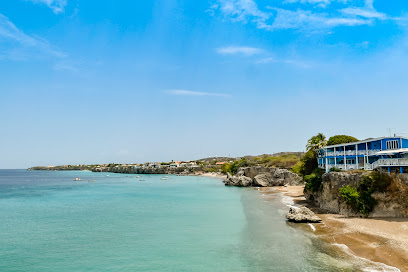
Christoffel National Park
Explore the lush landscapes and diverse wildlife at Christoffel National Park, a stunning national park in Curaçao perfect for adventure and relaxation.
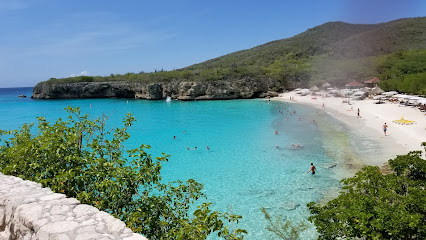
Shete Boka National Park
Explore the breathtaking landscapes and unique geological formations of Shete Boka National Park in Curaçao, a paradise for nature lovers and adventure seekers.
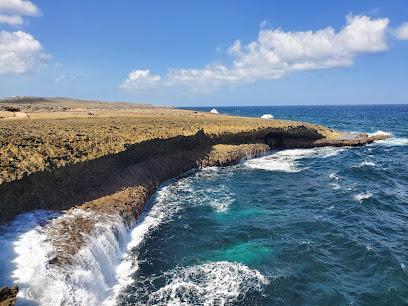
Kleine Knip
Experience the stunning beauty of Kleine Knip, a hidden beach paradise in Curaçao known for its soft sands, clear waters, and vibrant marine life.
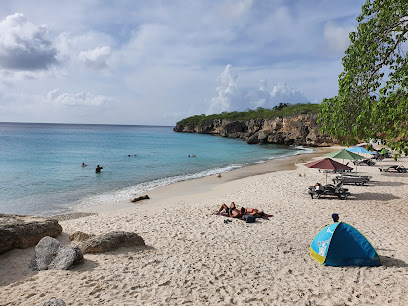
Boka Pistol
Discover the stunning cliffs and crystal-clear waters of Boka Pistol, a must-visit attraction in Curaçao for nature lovers and adventure seekers.

Playa Kalki
Experience the breathtaking beauty of Playa Kalki, a serene beach in Curaçao perfect for snorkeling, relaxation, and stunning sunset views.

Grote Knip
Discover the breathtaking beauty of Grote Knip, Curaçao's pristine beach with turquoise waters and stunning coastal views, ideal for relaxation and adventure.
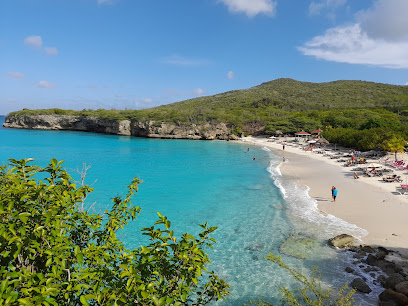
Boka Wandomi
Discover the serene beauty of Boka Wandomi, a natural coastal gem in Curaçao, perfect for relaxation and stunning photography.
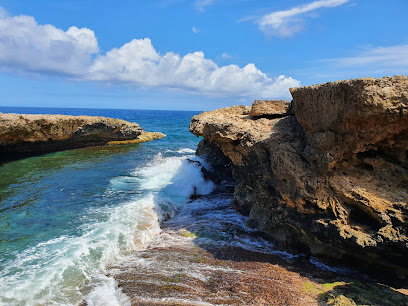
Manor Knip
Explore the enchanting Manor Knip in Curaçao, a heritage site blending history, stunning views, and cultural significance.
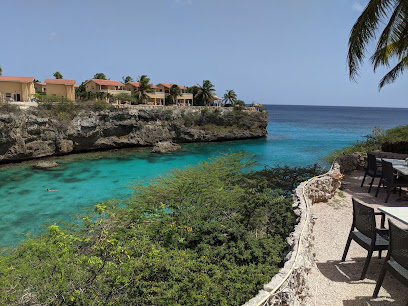
Boka Kalki
Experience the breathtaking beauty of Boka Kalki in Curaçao, where stunning landscapes meet vibrant marine life for an unforgettable adventure.
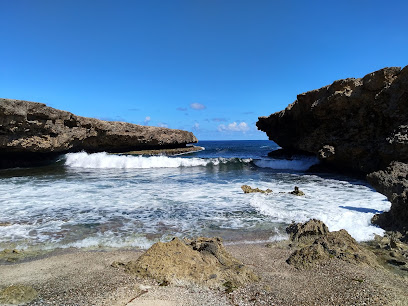
Blue Room Cave
Explore the enchanting Blue Room Cave in Curaçao, where azure waters meet stunning limestone formations for an unforgettable adventure.
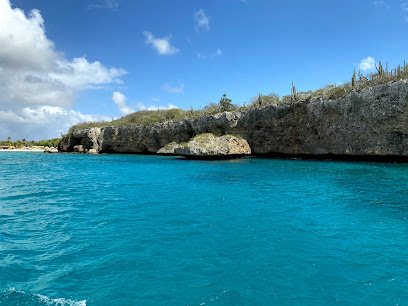
Playa Largu
Experience the tranquil shores of Playa Largu in Willemstad, Curaçao, where golden sands meet crystal-clear waters for the ultimate beach getaway.

Grote Knip uitzichtspunt
Experience the stunning vistas of Grote Knip Uitzichtspunt, a must-visit viewpoint in Curaçao for breathtaking ocean panoramas and picturesque landscapes.
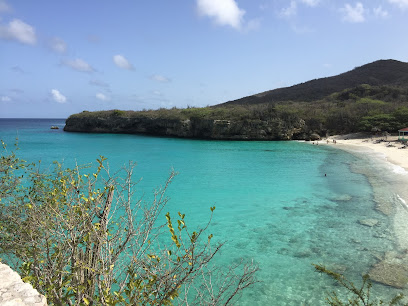
Plantation House Kenepa
Explore the legacy of Curaçao at Plantation House Kenepa, a historical museum showcasing the island's plantation heritage and cultural significance.

PLAYA KENEPA
Discover the stunning landscapes and crystal-clear waters of Playa Kenepa, a paradise for hikers and nature lovers in Curaçao.
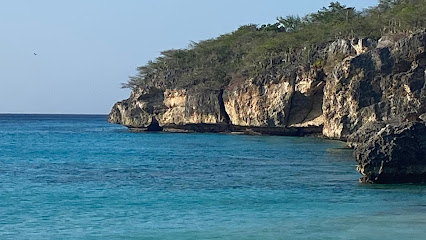
Unmissable attractions to see
Manor Knip
Explore the historical elegance of Manor Knip, a heritage site in Curaçao that offers stunning views and deep cultural insights.
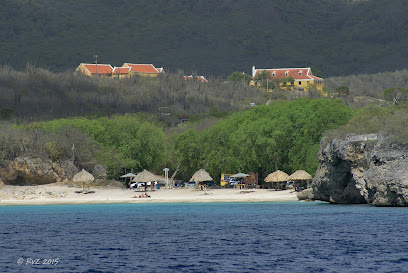
Boka/Playa Uniko
Discover the breathtaking landscapes and coastal beauty at Boka/Playa Uniko, a premier hiking area in Sint Michiel, Curaçao, perfect for nature lovers.
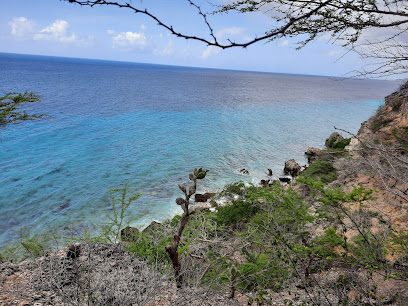
Plantation House Kenepa
Explore the rich history and cultural heritage of Curaçao at Plantation House Kenepa, a captivating museum that offers an insightful glimpse into the island's colonial past.
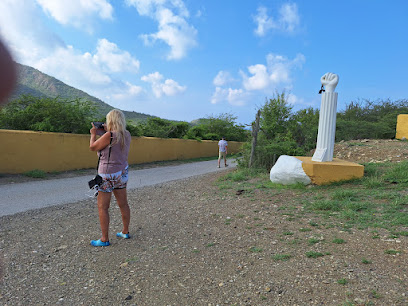
Playa Franki
Explore Playa Franki in Soto, Curaçao – a serene beach retreat with stunning views, perfect for relaxation and underwater adventures.
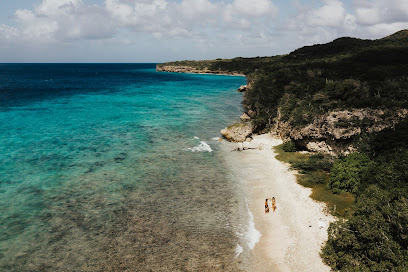
PLAYA KENEPA
Experience breathtaking beauty and tranquility at Playa Kenepa, one of Curaçao's most stunning beach destinations, perfect for relaxation and adventure.
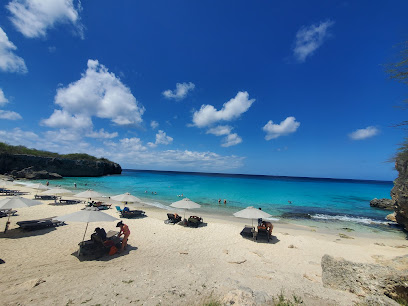
Tree of life
Discover the Tree of Life in Curaçao—a stunning park showcasing the island's unique biodiversity and a tranquil escape for nature lovers.

Man di Dios
Experience the beauty of Curaçao at Man di Dios, a tranquil tourist attraction offering stunning landscapes and peaceful surroundings.
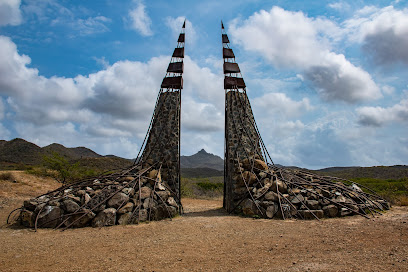
Curaçao
Discover the vibrant culture, stunning beaches, and thrilling adventures of Curaçao, a Caribbean paradise rich in history and natural beauty.
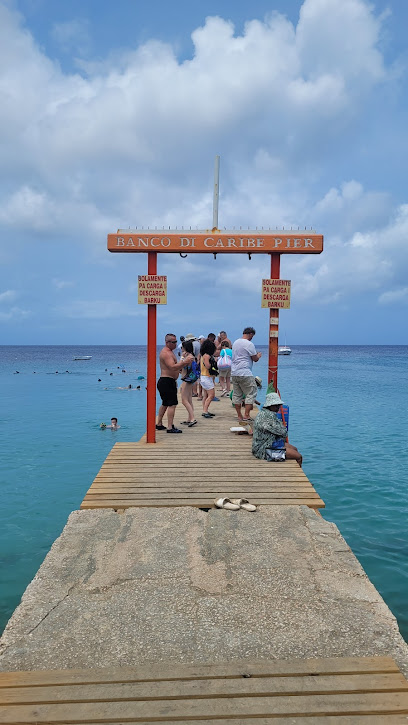
Reef with Coral and Sponge
Explore the vibrant Reef with Coral and Sponge in Sabana Westpunt, Curaçao, an underwater paradise filled with colorful marine life and breathtaking coral formations.

Essential places to dine
Zanzibar Beach & Restaurant
Experience exquisite Caribbean cuisine and stunning ocean views at Zanzibar Beach & Restaurant in Jan Thiel, Curaçao.
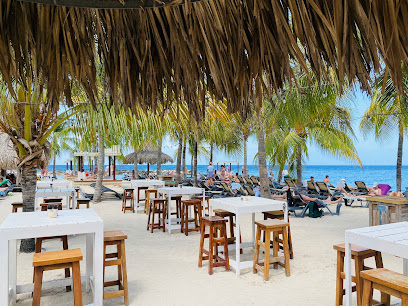
Pirate Bay Curaçao Beach Club and Restaurant
Discover the vibrant atmosphere at Pirate Bay Curaçao - where delicious dining meets stunning ocean views in an unforgettable beach club experience.
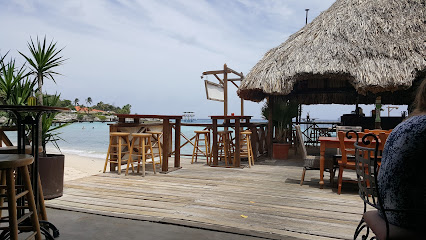
Restaurant & Café Gouverneur De Rouville
Discover Caribbean cuisine at Restaurant & Café Gouverneur De Rouville in Willemstad – where every meal is a celebration of local flavors.
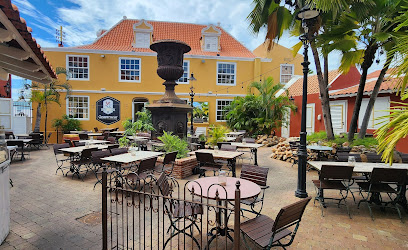
Karakter Beach - Lounge - Restaurant
Discover Karakter Beach - A perfect blend of delicious food and stunning ocean views in Curaçao's paradise.
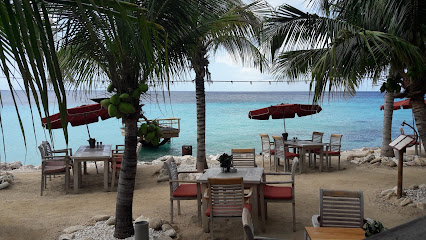
Brisa Do Mar
Experience authentic Caribbean cuisine at Brisa Do Mar in Jan Thiel, Curaçao - where every meal is a taste of paradise.
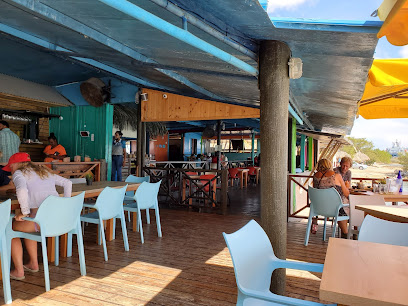
Hemingway
Experience the vibrant culinary scene at Hemingway in Willemstad - where delicious food meets live music by the waterfront.
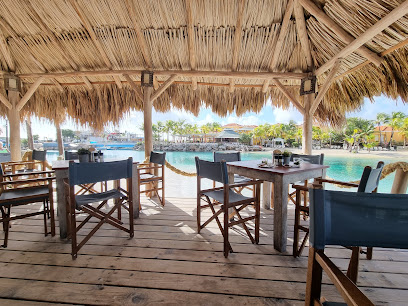
Sea Side Terrace
Experience exquisite seafood dining at Sea Side Terrace in Curaçao with stunning ocean views and a delightful local menu.
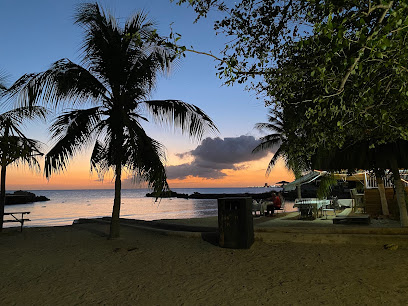
Restaurant Playa Forti
Discover exquisite Caribbean cuisine with breathtaking ocean views at Restaurant Playa Forti in beautiful Curaçao.
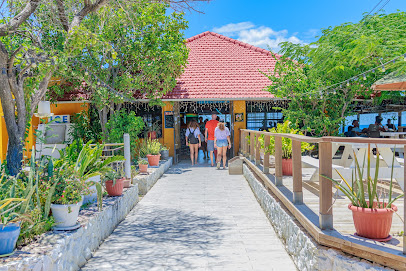
Cabana Beach Curacao
Experience relaxation and vibrant nightlife at Cabana Beach Curacao – where delicious cuisine meets stunning ocean views.
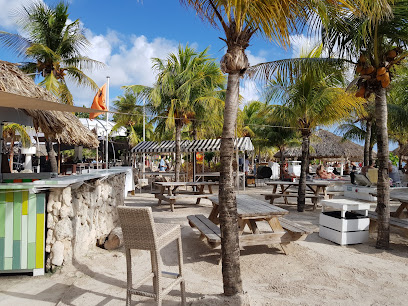
Jaanchie Restaurant
Experience authentic Caribbean flavors at Jaanchie Restaurant in Sabana Westpunt, Curaçao – a culinary gem amidst stunning natural beauty.
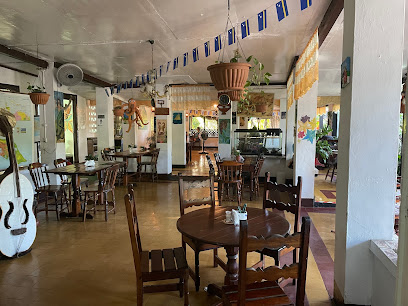
Bali Restaurant Grote Berg
Discover Bali Restaurant Grote Berg: A Culinary Delight in Curacao Featuring Local Flavors and Stunning Views.
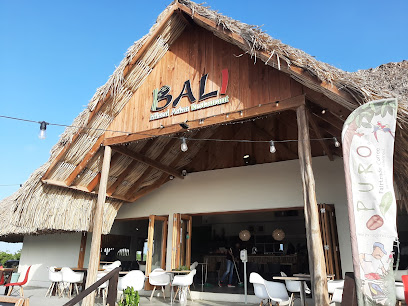
Chill Beach Bar & Grill
Experience tropical bliss at Chill Beach Bar & Grill in Willemstad – where Caribbean flavors meet stunning ocean views.
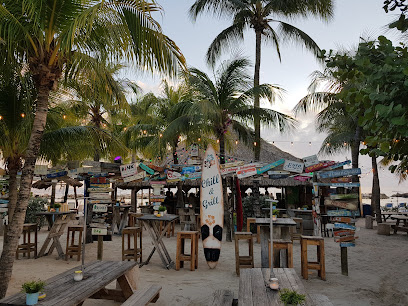
MOOD Beach Curacao
Experience exquisite dining at MOOD Beach Curacao - where breathtaking ocean views meet flavorful Caribbean cuisine.
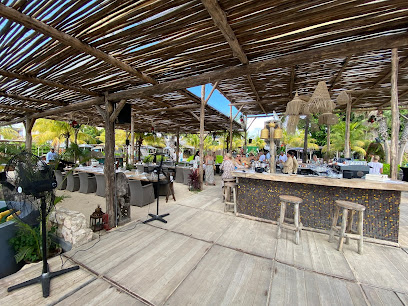
Blue View Sunset Terrace
Experience stunning sunsets and delicious local cuisine at Blue View Sunset Terrace in beautiful Curaçao.
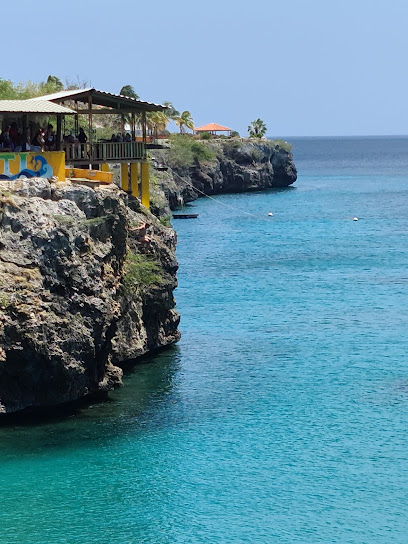
Shelterrock Paradise
Discover culinary delights and vibrant live music at Shelterrock Paradise in Curaçao - where every meal is a celebration!
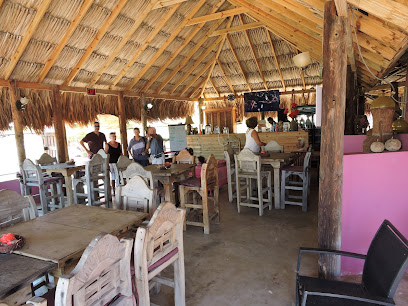
Markets, malls and hidden boutiques
Sambil Curacao
Discover the ultimate shopping and dining experience at Sambil Curacao, where retail therapy meets culinary delights in a vibrant atmosphere.
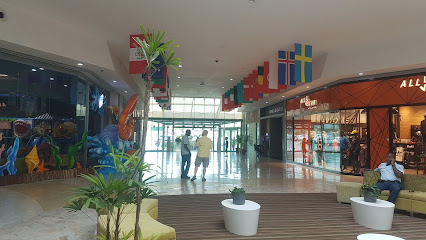
La Curacao
Experience the vibrant shopping scene at La Curacao, a must-visit department store in Willemstad, Curaçao, where local meets international in style.
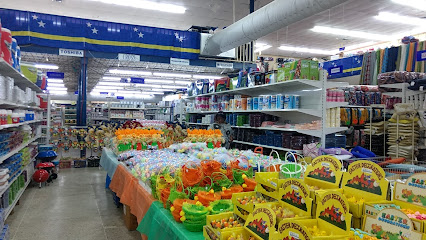
Chichi Shop Punda
Discover unique souvenirs and local crafts at Chichi Shop Punda, a vibrant gem in Willemstad's heart offering a taste of Curaçao's rich culture.
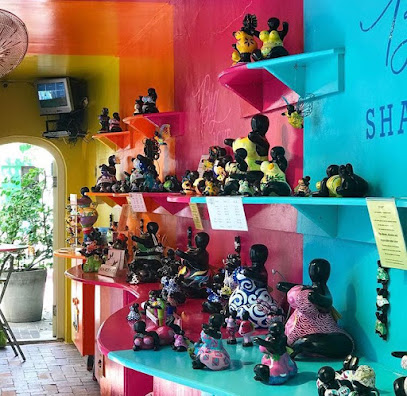
Santa Cruz Chinese Market
Discover authentic Asian ingredients and vibrant cultural experiences at Santa Cruz Chinese Market in Curaçao, a must-visit for culinary enthusiasts.
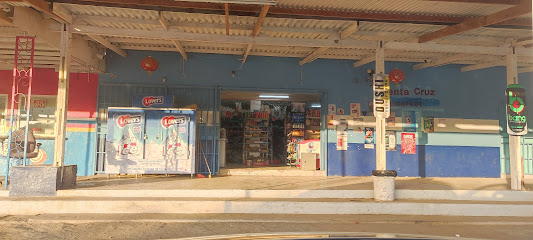
Sweetheart Curacao
Explore Sweetheart Curacao, a magical toy store in Willemstad's Sambil Shopping Mall, offering delightful toys for all ages.
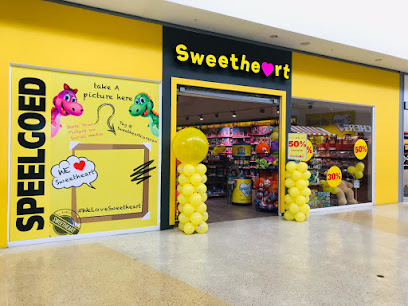
Playa Knip Smoothies
Discover the refreshing flavors of the Caribbean at Playa Knip Smoothies, where vibrant smoothies meet stunning beach views in Curaçao.

Concept Store by Sea & Sand
Explore the vibrant offerings of Curaçao at Concept Store by Sea & Sand, where local craftsmanship meets unique shopping experiences.

Jolly Fashion by Prakash
Discover unique clothing, jewelry, and more at Jolly Fashion by Prakash, the ultimate shopping destination in Willemstad, Curaçao.
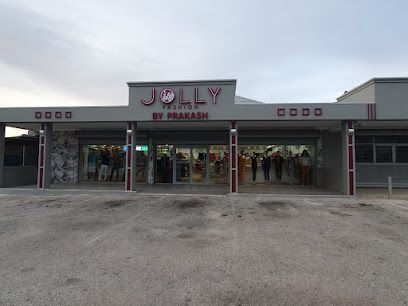
Huan le minimarkt
Experience the convenience of Huan le Minimarkt, your go-to grocery store in Grote Berg, Curaçao, for local flavors and everyday essentials.

Island Treasures
Explore Island Treasures in Willemstad for unique souvenirs showcasing local artistry and culture in Curaçao.
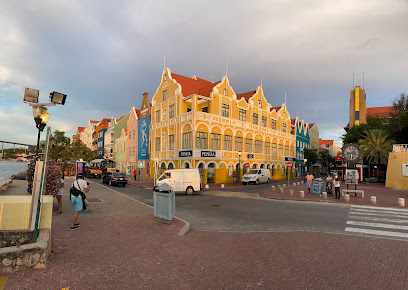
Britt Shop
Explore Britt Shop in Willemstad, Curaçao - a vibrant gift shop offering unique souvenirs and local crafts to cherish your island memories.
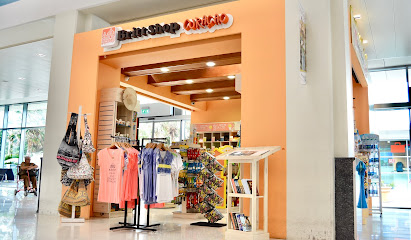
Unique point
Explore Unique Point in Willemstad for stylish men's clothing that captures the vibrant essence of Curaçao's culture and fashion.
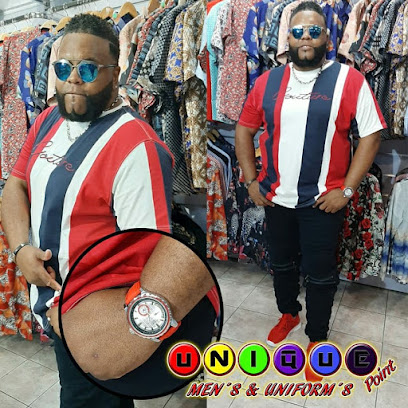
AURA FASHION
Explore AURA FASHION in Willemstad, Curaçao – a stylish women's clothing store offering trendy fashion and a delightful shopping experience.

Dolce Vita Boutique
Discover the vibrant fashion scene at Dolce Vita Boutique in Willemstad, Curaçao, featuring stylish apparel and unique accessories for every occasion.

Memories Curacao
Explore the vibrant souvenirs of Curaçao at Memories Curacao, where every item tells a story of the island's rich culture and heritage.
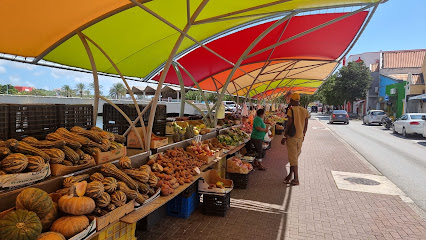
Essential bars & hidden hideouts
Karakter Beach - Lounge - Restaurant
Experience the perfect blend of beach vibes and gourmet dining at Karakter Beach - Lounge - Restaurant in Curaçao.
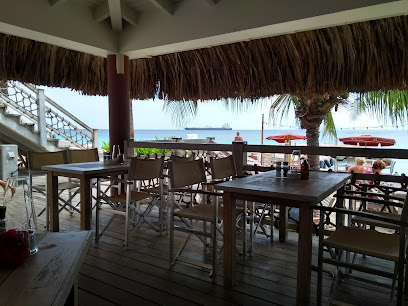
Hemingway
Discover the vibrant atmosphere and delicious cuisine of Hemingway, a premier restaurant and bar in Willemstad, Curaçao, offering live music and stunning waterfront views.
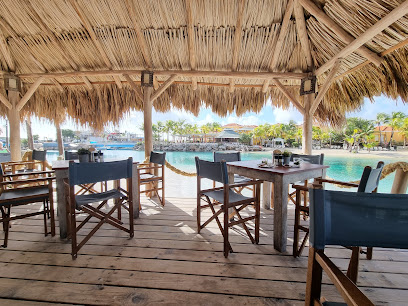
Wet & Wild Beach Club
Experience the vibrant atmosphere at Wet & Wild Beach Club in Curaçao, where sun, sand, and refreshing drinks await you on the beautiful Caribbean coast.
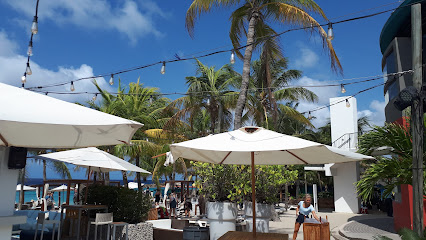
Chill Beach Bar & Grill
Discover a vibrant culinary gem on the shores of Curaçao at Chill Beach Bar & Grill, where local flavors meet breathtaking ocean views.
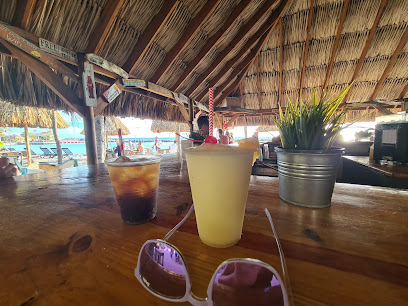
Daaibooi Beach Bar
Discover the vibrant atmosphere of Daaibooi Beach Bar in Curaçao, where stunning views meet refreshing drinks and local flavors in paradise.
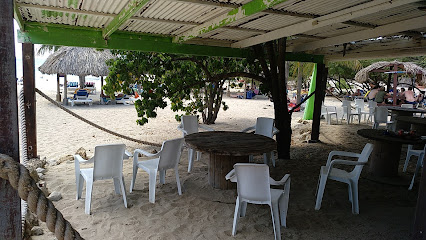
Blue View Sunset Terrace
Experience breathtaking sunsets and delicious local cuisine at Blue View Sunset Terrace, a dining gem in Curaçao's beautiful Sabana Westpunt.
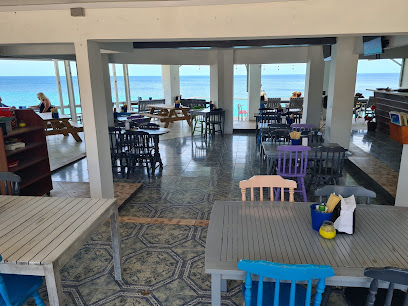
Shelterrock Paradise
Discover the essence of Curaçao at Shelterrock Paradise, where delicious cuisine meets vibrant live music in a stunning setting.
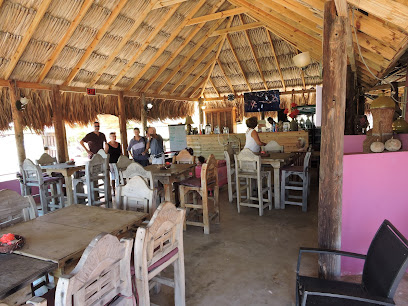
Netto Bar
Discover the vibrant atmosphere and delicious cocktails at Netto Bar in Willemstad, the perfect spot for a memorable night out.
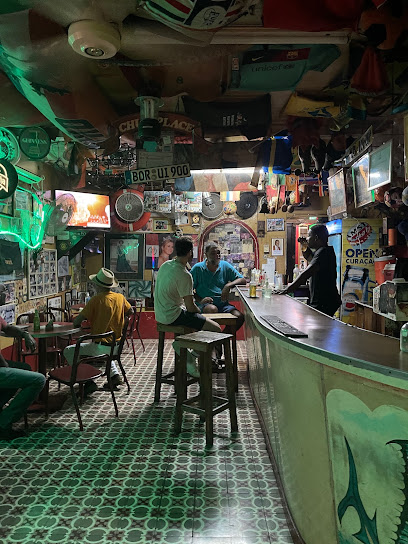
Bahia Beach Bar & Restaurant
Discover the flavors of Curaçao at Bahia Beach Bar & Restaurant, where ocean views meet delicious Caribbean cuisine in a vibrant atmosphere.
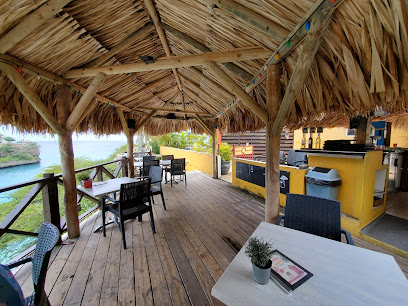
Cascada Rooftop Bar + Kitchen
Experience culinary delights and stunning views at the Cascada Rooftop Bar + Kitchen in Willemstad, Curaçao – a must-visit for every traveler.
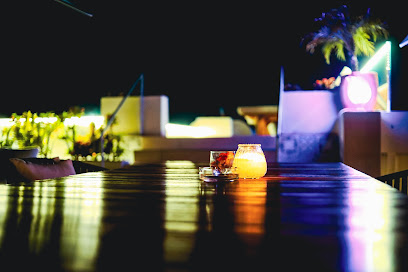
Captain's Sportsbar & Grill
Experience the thrill of sports, delicious food, and vibrant entertainment at Captain's Sportsbar & Grill in Willemstad, Curaçao.
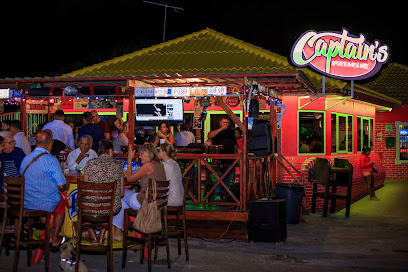
Mr Porter
Discover the vibrant nightlife at Mr. Porter, a stylish bar in Willemstad, offering exquisite cocktails and a lively atmosphere.
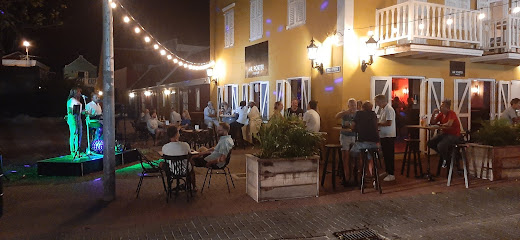
5 O'clock Somewhere Curaçao
Discover the lively spirit of Curaçao at 5 O'clock Somewhere, a vibrant bar and restaurant with stunning views and delicious Caribbean cuisine.
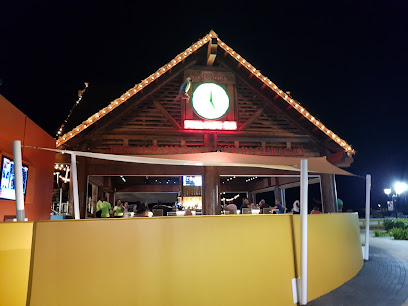
Doo-shee cocktail bar
Experience the vibrant nightlife of Willemstad at Doo-shee Cocktail Bar, known for its creative cocktails and stunning Caribbean views.
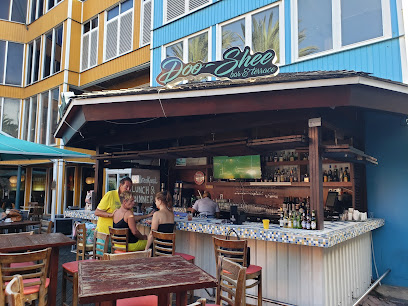
Le Mem Sports Club
Experience the thrilling atmosphere at Le Mem Sports Club, the ultimate sports bar and billiard destination in Willemstad for an unforgettable night out.
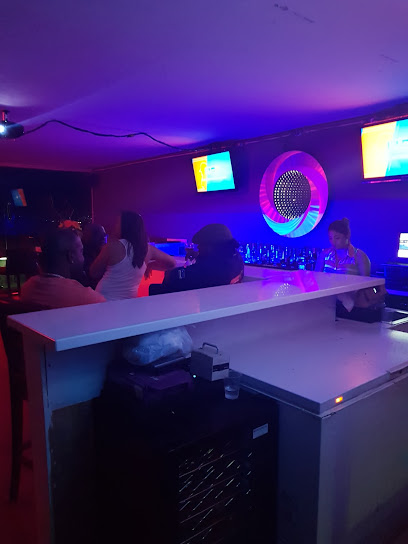
Local Phrases about Playa Kenepa
-
- HelloBon dia
[bon dee-ah] - GoodbyeAyo
[ah-yo] - YesSi
[see] - NoNo
[noh] - Please/You're welcomePor fabor
[por fah-bor] - Thank youDanki
[dahn-kee] - Excuse me/SorryDisculpa
[dees-kool-pah] - How are you?Kon ta bai?
[kohn tah bah-ee?] - Fine. And you?Bon. I bo?
[bon. ee boh?] - Do you speak English?Bo papia Ingles?
[boh pah-pee-ah een-gless?] - I don't understandMi no ta comprende
[mee noh tah com-prehn-deh]
- HelloBon dia
-
- I'd like to see the menu, pleaseMi ke mira e menu, por fabor
[mee keh mee-rah eh meh-noo, por fah-bor] - I don't eat meatMi no kome karni
[mee noh koh-meh kahr-nee] - Cheers!Salud!
[sah-lood] - I would like to pay, pleaseMi ke paga, por fabor
[mee keh pah-gah, por fah-bor]
- I'd like to see the menu, pleaseMi ke mira e menu, por fabor
-
- Help!Yudami!
[yoo-dah-mee] - Go away!Bai for di mi!
[bah-ee fohr dee mee] - Call the Police!Yama polis!
[yah-mah poh-lees] - Call a doctor!Yama un dokter!
[yah-mah oon dohk-tehr] - I'm lostMi a perde mi mes
[mee ah pehr-deh mee mehs] - I'm illMi ta malu
[mee tah mah-loo]
- Help!Yudami!
-
- I'd like to buy...Mi ke kumpra...
[mee keh koom-prah] - I'm just lookingMi ta so mira
[mee tah soh mee-rah] - How much is it?Kuantu e kos ta?
[kwan-too eh kohs tah?] - That's too expensiveEsaki ta muchu karu
[eh-sah-kee tah moo-choo kah-roo] - Can you lower the price?Bo por baha e prijs?
[boh por bah-hah eh prees?]
- I'd like to buy...Mi ke kumpra...
-
- What time is it?Kuantu ora ta?
[kwan-too oh-rah tah?] - It's one o'clockTa un ora
[tah oon oh-rah] - Half past (10)Mita di dies
[mee-tah dee dees] - MorningMarduga
[mahr-doo-gah] - AfternoonAtardi
[ah-tahr-dee] - EveningAnochi
[ah-noh-chee] - YesterdayAnoche
[ah-noh-cheh] - TodayAwe
[ah-weh] - TomorrowMañana
[mah-nyah-nah] - 1Un
[oon] - 2Dos
[dohs] - 3Tres
[trehs] - 4Kuater
[kwah-ter] - 5Sinku
[seen-koo] - 6Seis
[say-ees] - 7Siete
[see-eh-teh] - 8Ocho
[oh-choh] - 9Nuebe
[nweh-beh] - 10Dies
[dees]
- What time is it?Kuantu ora ta?
-
- Where's a/the...?Unda ta e...?
[oon-dah tah eh...?] - What's the address?Kuantu e adres ta?
[kwan-too eh ah-drehs tah?] - Can you show me (on the map)?Bo por mustra mi (riba e mapa)?
[boh por moos-trah mee (ree-bah eh mah-pah)?] - When's the next (bus)?Kuando e siguiente (bus)?
[kwan-doh eh see-gwee-en-teh (boos)?] - A ticket (to ....)Un tiket (pa ....)
[oon tee-keh (pah ....)]
- Where's a/the...?Unda ta e...?
History of Playa Kenepa
-
Long before European explorers set foot on Curacao, the island was inhabited by the Arawak and Caiquetio tribes. These indigenous people were skilled fishermen and farmers, utilizing the natural resources of Playa Kenepa and its surroundings for sustenance. They left behind artifacts and petroglyphs that offer a glimpse into their rich culture and way of life.
-
In 1499, Spanish explorers led by Alonso de Ojeda arrived on the shores of Curacao. They initially named the island 'Isla de los Gigantes' due to the tall stature of the native Caiquetio people. Playa Kenepa, like the rest of the island, came under Spanish control, marking the beginning of European influence in the region.
-
In 1634, the Dutch West India Company seized control of Curacao from the Spanish. Playa Kenepa, known locally as 'Grote Knip' and 'Kleine Knip,' became part of the island's flourishing economy based on salt mining, agriculture, and trade. The Dutch constructed forts and settlements, leaving a lasting architectural and cultural impact on the region.
-
During the 17th and 18th centuries, Curacao became a center for the transatlantic slave trade. Enslaved Africans were brought to the island and forced to work on plantations. Playa Kenepa was no exception, with its fertile lands being used for agriculture. The legacy of this dark period is still evident in the island’s cultural and demographic landscape.
-
In 1863, slavery was abolished in the Dutch Caribbean, including Curacao. Playa Kenepa saw a transformation as former slaves and their descendants began to assert their cultural identity and heritage. The area became a symbol of resilience and a testament to the rich, diverse cultural tapestry that defines modern Curacao.
-
The mid-20th century marked the beginning of tourism development in Curacao. Playa Kenepa, with its pristine beaches and crystal-clear waters, became a popular destination for both locals and tourists. Infrastructure improvements and eco-friendly initiatives were introduced to preserve the natural beauty of the area while accommodating the growing number of visitors.
-
Today, Playa Kenepa is celebrated as one of Curacao's most beautiful and culturally significant beaches. It remains a beloved spot for relaxation, snorkeling, and exploring the vibrant marine life. Efforts continue to preserve its natural charm and historical significance, making it a must-visit destination for those seeking to experience the unique blend of history and natural beauty that Curacao offers.
Playa Kenepa Essentials
-
Playa Kenepa is located on the western side of Curacao, approximately 45 minutes from Willemstad, the island's capital. The nearest airport is Hato International Airport (CUR). From the airport, you can rent a car, take a taxi, or use a shuttle service to reach Playa Kenepa. Renting a car is recommended for convenience and flexibility.
-
The most convenient way to explore Playa Kenepa and the surrounding areas is by renting a car. Public buses are available but infrequent and may not reach all tourist spots. Taxis are also an option, but they can be expensive. If you choose to rent a car, make sure to book in advance during peak tourist seasons.
-
The official currency in Curacao is the Netherlands Antillean Guilder (ANG), also known as the Florin. US dollars are widely accepted, and credit cards are commonly used in hotels, restaurants, and shops. It's advisable to carry some cash for smaller establishments and markets. ATMs are available in Willemstad and larger towns.
-
Playa Kenepa is generally safe for tourists. However, it's important to take standard precautions. Avoid leaving valuables unattended on the beach and be cautious in less populated areas at night. Willemstad and its surrounding neighborhoods have higher crime rates, so stay vigilant and avoid walking alone after dark.
-
In case of emergency, dial 911 for immediate assistance. There are medical facilities and pharmacies in Willemstad and nearby towns. It's recommended to have travel insurance that covers medical emergencies. For minor health issues, there are pharmacies where you can purchase over-the-counter medications.
-
Fashion: Do wear light, breathable clothing suitable for the tropical climate. Don't wear overly revealing clothing outside of the beach areas. Religion: Do respect local customs, especially if visiting religious sites. Don't engage in loud or disruptive behavior. Public Transport: Do use official taxi services and agree on fares beforehand. Don't rely solely on public buses, as they can be unreliable. Greetings: Do greet people with a friendly 'Bon dia' (Good morning). Don't forget to smile and be polite. Eating & Drinking: Do try local dishes such as Keshi Yena and Funchi. Don't refuse hospitality, as it is considered impolite.
-
To experience Playa Kenepa like a local, visit during weekdays to avoid the weekend crowds. Bring your own snorkeling gear to explore the vibrant underwater life. Engage with locals; they are friendly and often willing to share tips about the best spots. Don't miss out on trying local snacks from beach vendors.
Nearby Cities to Playa Kenepa
-
Things To Do in Westpunt
-
Things To Do in Soto
-
Things To Do in Barber
-
Things To Do in Sint Michiel
-
Things To Do in Julianadorp
-
Things To Do in Willemstad
-
Things To Do in San Nicolas
-
Things To Do in Savaneta
-
Things To Do in Santa Cruz
-
Things To Do in Pos Chiquito
-
Things To Do in Paradera
-
Things To Do in Sero Blanco
-
Things To Do in Tanki Leendert
-
Things To Do in Oranjestad
-
Things To Do in Noord

